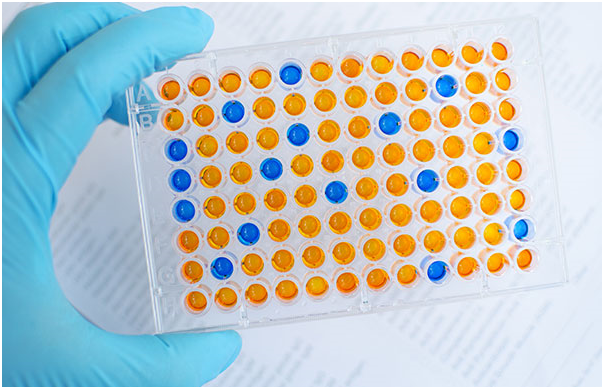Enzyme-linked immunosorbent assays (ELISA) are the most common method for ligand binding assays. The ELISA method is designed for detecting and quantifying substances such as peptides, proteins, antibodies, and hormones, and is typically performed on a 96-well plate.
Using ELISA, the detection was completed by assessing the activity of the conjugated enzyme by incubation with the substrate to obtain a measurable signal. You can also visit www.bosterbio.com/human-app-picokine-trade-elisa-kit-ek0658-boster.html for APP elisa kits online.
The binding and immobilization of the reagent by ELISA facilitates the separation of the bound material from the unbound material during analysis and the washing of the unbound material specifically to measure specific analytes.

Image Source: Google
The ELISA technique was originally developed in the 1970s when it replaced traditional radioimmunoassay methods. Recently, however, the ELISA method has been combined with laboratory automation techniques to dramatically improve performance and sensitivity. These improvements include automatic dishwashing and automatic reporting.
The ELISA method is one of the most diverse methods available with health and large molecular laboratory applications. The platform is available in different mechanisms, including direct, indirect, sandwich, competitive, and ELISPOT, each with an optimal application.
The ELISA plate passively binds to antibodies and proteins and then expands by adding enzyme substrate to generate a visible signal indicating that the amount of antigen on the plate is captured and then incubated with the detecting antibody.
The incorporation and immobilization of these reagents facilitate the separation of the bound material from the unbound material during analysis and washing of the unattached material specifically to measure specific analytes.